Self-collected specimens in the fight against cervical cancer
Article
|Last update
In this project, we have demonstrated that a cell sample taken at home by the woman herself is just as accurate as a cell sample taken by a doctor during a gynecological examination for HPV testing, and that a cell sample taken at home by the woman herself was a preferred screening method.
Self-collected sample is a good alternative to physician collected sample
We have shown that collecting cervical cancer screening sample at home by women themselves was well-accepted More than 80% of study participants preferred self-sampling to a pelvic examination at the physician. Further, this study demonstrated that self-collected sample is just as accurate as one taken by a healthcare provider for detecting the presence of human papillomavirus (HPV), and performed well among patients presenting with cervical precancer and cancer. These findings have contributed to implementation of self-sampling in the national screening program, CervicalScreen Norway now in 2024.

Recruitment for the study was concluded in September 2016. A total of 310 women who had been diagnosed with cervical precancer or cancer were encouraged to take a cell sample at home using two different devices (Evalyn® Brush and FLOQSwabs™) on the day before their scheduled hospital appointment for treatment. At the hospital, another cell sample was taken by a physician. These sample sets were analyzed using three commercially available HPV detection methods. The remaining biological material is stored in the general research biobank TREASURE-HPV for use in future research, upon informed consent.
Comparable to current practice
HPV DNA detection in self-collected specimens provides an objective screening method that is comparable to routine screening for detecting cervical carcinoma and high-grade lesions.
The project also investigated whether women were satisfied with the testing equipment and the reliability of the home test. Women found that home testing was a good alternative to a sample taken by a doctor. Experiences with home testing were very positive, and most of the women preferred home testing as a screening method in the future, even though they trusted a sample taken by a doctor more.
Increased knowledge about self-collection
The study has contributed to increased knowledge about methods for detecting cellular cervical changes and cancer in the cervix. In order to offer an alternative to physician-collected cervical samples to those who need it the most, we have continued to investigate how home testing can reduce the need for a gynecological examination.
Related projects:
Cost-effectiveness and implementation of self-sampling
In collaboration with a group of modelling experts at the University of Oslo and Harvard University, we have assessed the cost-effectiveness and consequences of implementing self-sampling in CervicalScreen Norway. Those findings suggest that targeted self-sampling for those not attending screening likely provides a cost-effective solution. Supported by these studies, a study Equalscreen in Norway and several international studies, the CervicalScreen Norway decided in 2021 to implement self-sampling into the programme to boost participation among long-time non-attenders.
In 2022, 20.5 million Norwegian kroner (NOK) were allocated over the National budget, and an additional 19.2 million NOK were allocated in 2023, for further implementation of self-sampling in the screening programme. HPV self-sampling is now being introduced into the screening programme in Norway in 2024
Collaborations
The project is a collaboration coordinated by the Cancer Registry of Norway (Kreftregisteret) and has involved patients from Østfold Hospital and Oslo University Hospital (Ullevål and Radiumhospitalet).
The hospitals were responsible for recruitment and sample collection. Patients diagnosed with precursors to cervical cancer were recruited from Østfold Hospital and Oslo University Hospital, Ullevål. Cancer patients referred to Oslo University Hospital Radiumhospitalet were informed about the study by their doctor during their initial consultation at the hospital.
About the project
- Mari Nygård, Project leader
- Mona Hansen, Senior Engineer
- Christine Jonassen, Director
- Elen Johanne Lahlum, Advisor
- Ståle Nygård, Researcher
- Eva Wessel Stratford, Senior Advisor
- Ameli Trope, Section leader
- Giske Ursin, Director
Previous Key persons
- Maarit Leinonen, Kristina Schee
Project period
2013-2030
Ethical approvals
REC: 2014/655, 2014/667
Financing
This project is financed by the Norwegian Cancer Society
ClinicalTrials number
NCT02945891
Publications
Leinonen MK, Schee K, Jonassen CM, Lie AK, Nystrand CF, Rangberg A, Furre IE, Johansson MJ, Tropé A, Sjøborg KD, Castle PE, Nygård M. Safety and acceptability of human papillomavirus testing of self-collected specimens: A methodologic study of the impact of collection devices and HPV assays on sensitivity for cervical cancer and high-grade lesions. J Clin Virol. 2018 Feb-Mar;99-100:22-30. doi: 10.1016/j.jcv.2017.12.008. Epub 2017 Dec 21. PMID: 29289814.
Burger EA, Sy S, Nygård M, Kim JJ. The Cost-Effectiveness of Cervical Self-Sampling to Improve Routine Cervical Cancer Screening: The Importance of Respondent Screening History and Compliance. Cancer Epidemiol Biomarkers Prev. 2017 Jan;26(1):95-103. doi: 10.1158/1055-9965.EPI-16-0350. Epub 2016 Sep 13. PMID: 27624639; PMCID: PMC5225039.

